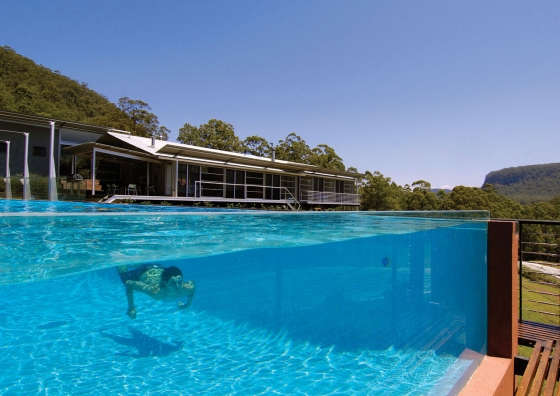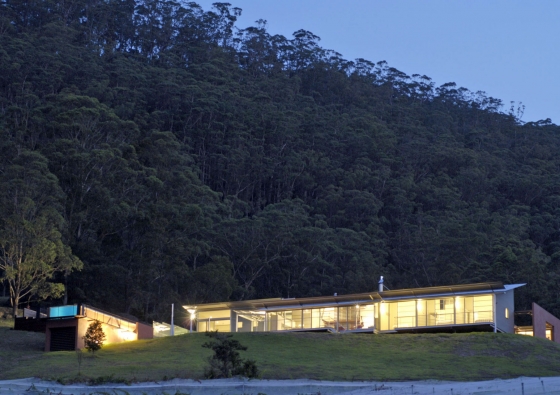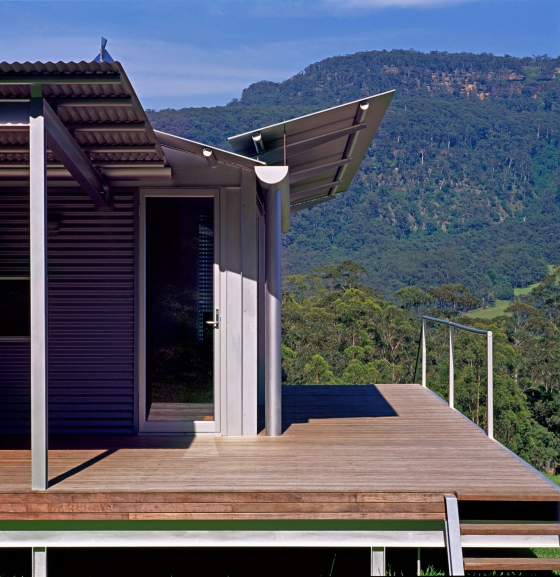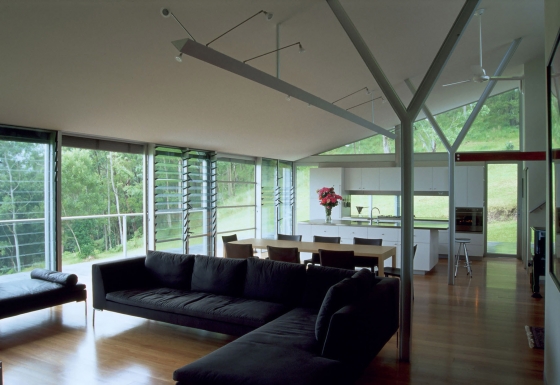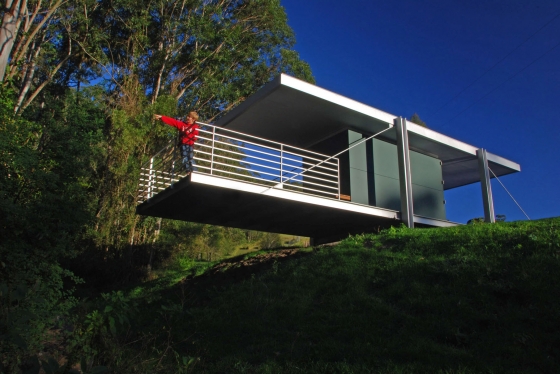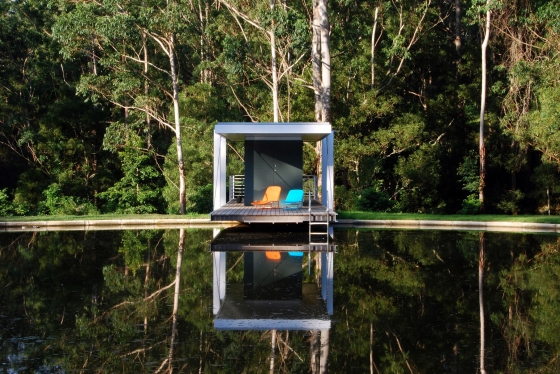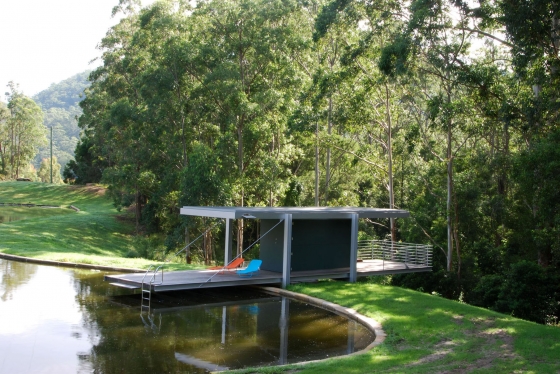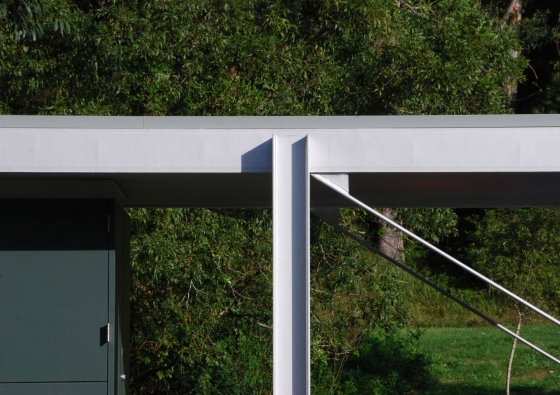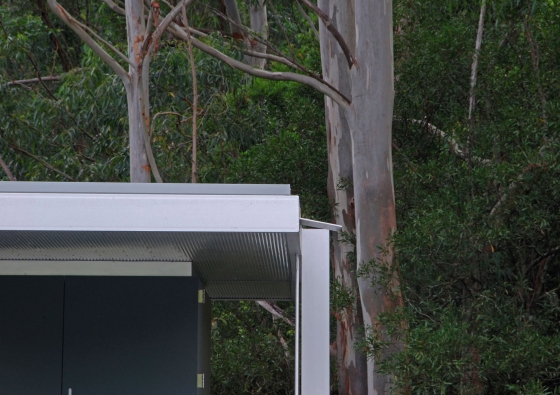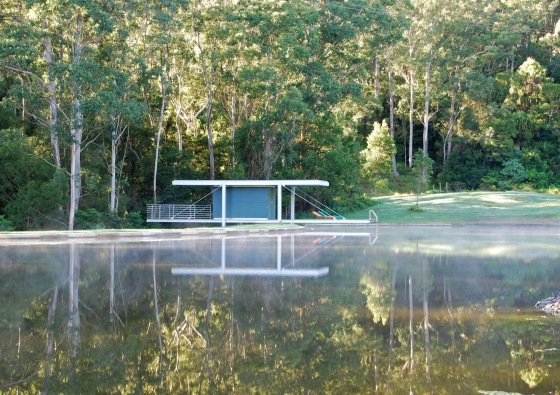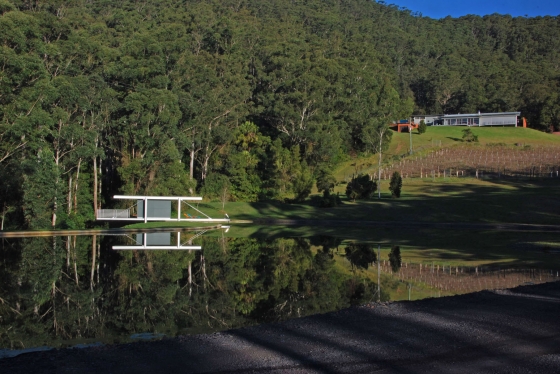COUNTRY WEEKENDER IN
KANGAROO VALLEY - AUSTRALIA
BIG ROCK is a 140 acre property two hours drive from Sydney. It is a place where owners and their friends escape from the city on a weekly basis to indulge in activities close to nature.
There is a small creek along which winds a bush walk, a river with a swimming hole near which echidnas have their burrow. The grape vines produce wine which is of intense richness as the summer is hot and dry. Staying at Big Rock you bushwalk, ride bikes, fish and immerse yourself in the beauty of nature. You watch the kangaroos gathering at the edge of the dam and fog lifting on every winter morning. You listen to kookaburras and enjoy beautiful sunsets. When driving during the day you have to be careful not to run over a turtle or a snake, at night you have to watch out not to hit a wombat crossing the road. As is common in rural Australia scanning the horizon provides little evidence of any urban activity.
For an architect who came from Europe the process of understanding the Australian landscape was an important part of growing into the local culture. You learn the different shades of green vegetation. It takes some time to understand that dry looking grass is a natural colour for Australian grass and that trees do not provide much shade. The forest you look at is very transparent to light and trees need to be observed from a close distance to be fully appreciated. What we call a river may carry water only after the rain; with no seasons the trees shed bark instead of leaves.
The composition of the house is dominated by a peaceful horizontality of forms wrapping around the hillside at the level where the forest starts. The philosophy of the project was built on the relationship of three main elements: a lightly suspended steel pavilion, a solid, sculptural volume of the pool and the rolling slopes of the valley. It is both simple and complex. Tranquillity for the occupants was to be maintained and Big Rock will not feel too large for just a couple and nor too small for 15 visitors.
The jetty/gazebo is a small structure located at the edge between the dam and forest. The jetty is suspended above the water and the gazebo is suspended toward the trees. A slight imbalance created by positioning of the storage room defines the size of each part. The jetty is larger and caters to more social activity such as swimming, fishing and picnics at sunset. The smaller gazebo is quieter: a place of reflection, watching the birds and reading a book. No part of the deck touches the water or forest emphasising respect to those natural elements. The form is essentially made of three horizontal planes: the surface of water, deck and roof.
The crux is to provide a relationship with nature by enhancing a composition created by the forces of nature and to draw attention to it. The role of the designer is to provide the point from which this nature can be appreciated and interacted with. The jetty/gazebo is such a point taking its strength from its surrounds.






